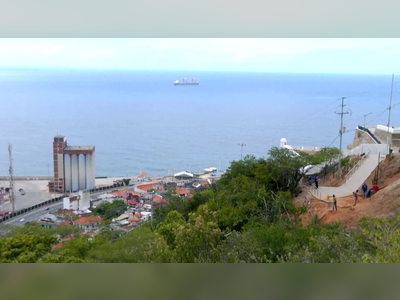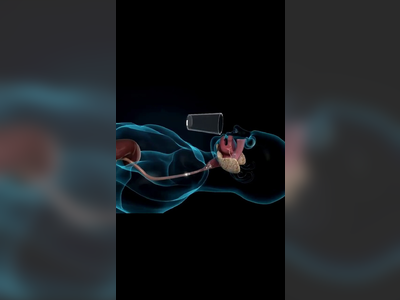Ruta 27: A Deceptive arterial with Hidden Hazards
Lanamme report exposes critical safety issues on Costa Rica's crucial highway, raising alarms about surface deterioration, slip-prone pavements, and unstable slopes.
The security conditions for users of Costa Rica's Ruta 27 have experienced a decline over the past year, owing to the deterioration or absence of critical safety elements and the precarious state of the pavements and slopes along the route connecting San José and Puerto Caldera.
These troubling findings were revealed in a report released on Monday by the Laboratorio Nacional de Materiales y Modelos Estructurales (Lanamme).
The examination focused on the structural and functional condition of pavements, road safety and mobility components, and a detailed inspection of the slopes.
While the main arterial is predominantly in satisfactory structural condition, superficial degradations are on the rise compared to previous evaluations.
Persistent issues such as alligator cracking, potholes, aggregate stripping, and both longitudinal and transversal cracking were identified, despite the general structural robustness.
A grave concern highlighted by the Lanamme report is the rise of 'bleeding' pavement, a phenomenon banned in the original tender due to its adverse impact on surface grip.
The resulting condition has rendered certain stretches 'highly slippery,' significantly affecting safety, particularly on the radial roads, where a generalized 'slippery' state was reported.
In response to these findings, recommendations urge the concessionaire overseeing Ruta 27 to implement early interventions, such as asphalt seals in zones with functional deterioration, to curb further damage.
Enhancing or maintaining quality and maintenance standards and executing immediate major rehabilitation on structurally critical radials is deemed necessary to prolong the infrastructure's lifespan.
The road's safety assessment uncovered various deficiencies in the main road and radials, ranging from geometric design flaws to inadequate signage, roadside margins, vehicular containment systems, and pedestrian connectivity.
Of the 1,459 vertical signs surveyed, a promising 87% were rated as good, yet 6% fell into fair condition, and 7% were rated poor.
Horizontal markings were less favorable, with 341 sections marked as poor or deteriorated.
Identifying high-risk accident zones, the Lanamme report flagged factors such as the absence of vehicular containment systems, protective netting, cycling infrastructure, and public transport connectivity, as well as inadequate lighting.
Particular attention was drawn to sections with high pedestrian crossing demand outside pedestrian bridges' influence, significantly raising the risk of accidents.
A stark revelation from the slope inspection was the unstable condition of 56 sites, primarily due to poor management of surface runoff and erosion, compounded by other failures.
Detailed assessments were limited to seven of these slopes due to safety constraints.
Three slopes pose a 'low' risk, for which erosion control and water runoff management methods are recommended.
However, three others require more detailed evaluations, and one presents a 'high' risk, demanding an in-depth analysis under current topographical and potential seismic conditions.
Surface erosion evidence underscores the inadequacies of existing systems, prompting recommendations to enhance protective measures.
In slopes lacking suitable runoff control systems, mitigation strategies are advised to prevent erosion and improve stability.
Efforts by _La Nación_ to obtain a response from the Ruta 27's concessionaire regarding these findings were met with silence; the agency stated their unfamiliarity with the study and declined to comment at this time.
These troubling findings were revealed in a report released on Monday by the Laboratorio Nacional de Materiales y Modelos Estructurales (Lanamme).
The examination focused on the structural and functional condition of pavements, road safety and mobility components, and a detailed inspection of the slopes.
While the main arterial is predominantly in satisfactory structural condition, superficial degradations are on the rise compared to previous evaluations.
Persistent issues such as alligator cracking, potholes, aggregate stripping, and both longitudinal and transversal cracking were identified, despite the general structural robustness.
A grave concern highlighted by the Lanamme report is the rise of 'bleeding' pavement, a phenomenon banned in the original tender due to its adverse impact on surface grip.
The resulting condition has rendered certain stretches 'highly slippery,' significantly affecting safety, particularly on the radial roads, where a generalized 'slippery' state was reported.
In response to these findings, recommendations urge the concessionaire overseeing Ruta 27 to implement early interventions, such as asphalt seals in zones with functional deterioration, to curb further damage.
Enhancing or maintaining quality and maintenance standards and executing immediate major rehabilitation on structurally critical radials is deemed necessary to prolong the infrastructure's lifespan.
The road's safety assessment uncovered various deficiencies in the main road and radials, ranging from geometric design flaws to inadequate signage, roadside margins, vehicular containment systems, and pedestrian connectivity.
Of the 1,459 vertical signs surveyed, a promising 87% were rated as good, yet 6% fell into fair condition, and 7% were rated poor.
Horizontal markings were less favorable, with 341 sections marked as poor or deteriorated.
Identifying high-risk accident zones, the Lanamme report flagged factors such as the absence of vehicular containment systems, protective netting, cycling infrastructure, and public transport connectivity, as well as inadequate lighting.
Particular attention was drawn to sections with high pedestrian crossing demand outside pedestrian bridges' influence, significantly raising the risk of accidents.
A stark revelation from the slope inspection was the unstable condition of 56 sites, primarily due to poor management of surface runoff and erosion, compounded by other failures.
Detailed assessments were limited to seven of these slopes due to safety constraints.
Three slopes pose a 'low' risk, for which erosion control and water runoff management methods are recommended.
However, three others require more detailed evaluations, and one presents a 'high' risk, demanding an in-depth analysis under current topographical and potential seismic conditions.
Surface erosion evidence underscores the inadequacies of existing systems, prompting recommendations to enhance protective measures.
In slopes lacking suitable runoff control systems, mitigation strategies are advised to prevent erosion and improve stability.
Efforts by _La Nación_ to obtain a response from the Ruta 27's concessionaire regarding these findings were met with silence; the agency stated their unfamiliarity with the study and declined to comment at this time.











